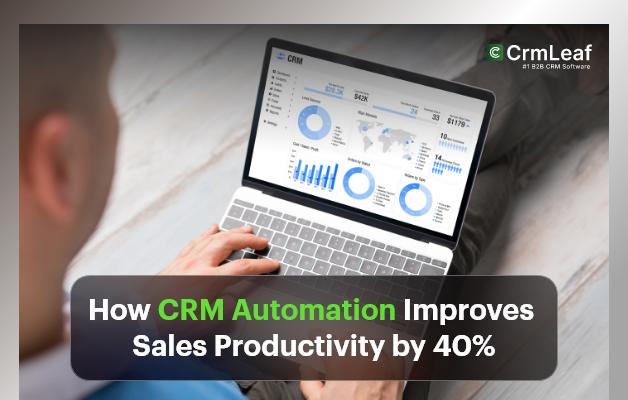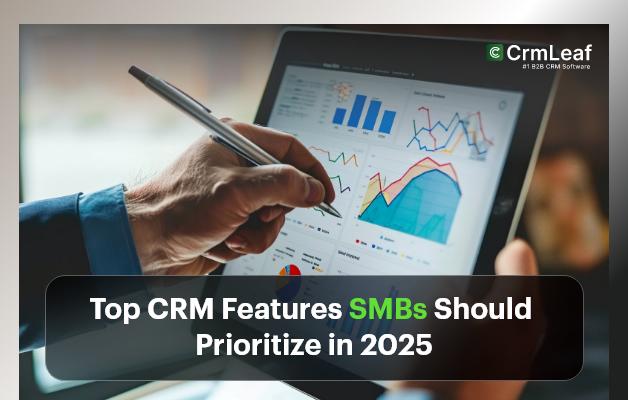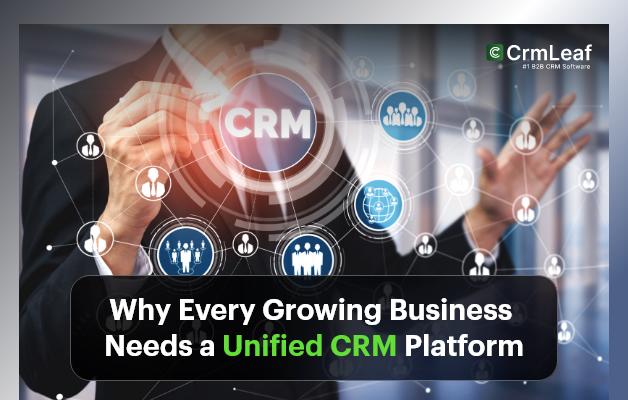In today’s fast-paced business landscape, companies that automate their sales processes see measurable gains in performance and efficiency. How CRM Automation Improves Sales Productivity by 40% isn’t just a compelling statement — it’s an achievable reality for organizations leveraging intelligent automation.
Yet SMBs still struggle with outdated systems: spreadsheets, isolated apps, and manual data entry. These inefficiencies result in missed deals, delayed communication, low visibility, and overwhelmed sales teams.
In 2025 — an era defined by speed, personalization, and data-driven selling — manual processes don’t just slow you down; they create competitive disadvantages.
In this article, you’ll discover:
- Why automation is now essential — not optional
- A framework for implementing CRM + ERP automation
- Real success examples from growing businesses
- Which CrmLeaf modules drive the fastest ROI
By the end, you’ll be equipped to modernize workflows, increase productivity, and scale with confidence.
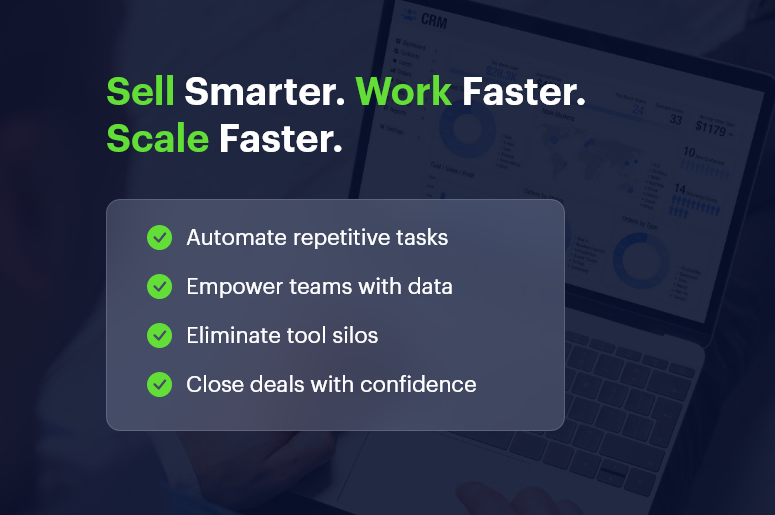
Why CRM Automation Matters
Digital disruption and rising customer expectations have transformed sales. Manual processes are costly, slow, and error-prone.
Key Challenges of Non-Automated Systems
- Lost Time & Productivity: Reps spend hours entering data instead of selling.
- Data Inaccuracy & Risk: Manual spreadsheets lead to errors, duplicates, and inconsistent customer records.
- Compliance & Cost Issues: Disparate systems increase operational cost and make audit trails difficult.
Real-World Impact Examples
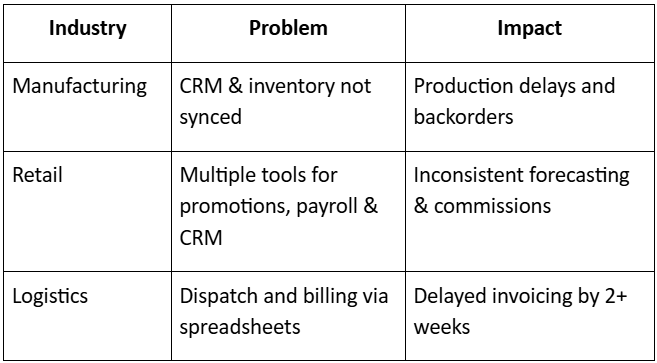
Growing companies can no longer afford disconnected tools. Automation + integration = competitive advantage.
How CRM Automation Improves Sales: Framework & Best Practices
Implementing CrmLeaf’s unified platform requires a strategic rollout.
Map Your Sales Process End-to-End
- Document every stage — from lead capture to renewal.
- Identify bottlenecks and repetitive tasks.
- Use CrmLeaf CRM, Inventory, and Finance modules to automate handoffs.
Set Automation Goals
Examples:
- Reduce lead response time by 50%
- Automate proposal and approval cycles
- Increase sales forecasting accuracy
Tie each KPI to a CrmLeaf module for measurable progress.
Start With Quick-Win Automations
Examples:
- Automatic lead assignment
- Automated email sequences
- Follow-up reminders
Quick wins build confidence and accelerate adoption.
Use Unified Data for Intelligent Decisions
Connecting CRM, Finance, Manufacturing, and Projects provides:
- Pipeline and revenue insights
- Inventory-aware quoting
- Accurate forecasting
Sales leaders move from guesswork → precision.
Align Teams with Shared Workflows
Use Projects and HRMS modules to:
- Improve collaboration
- Reduce handoff delays
- Sync sales, manufacturing, billing, and service teams
Train & Empower Users
- Deliver role-based onboarding
- Encourage feedback loops
- Optimize workflows based on usage patterns
Do’s & Don’ts
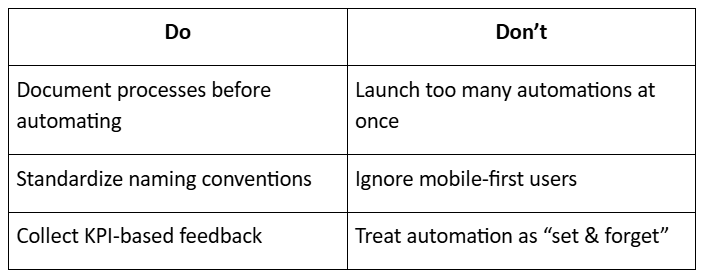
Expert Tips
- Roll out automation in phases
- Review data integrity monthly
- Use CrmLeaf API to connect existing tools
Common Mistakes to Avoid
- No stakeholder alignment
- Over-reliance on default templates
- No optimization post-implementation
Mini Implementation Checklist
- Map processes
- Assign automation champions
- Train teams
- Launch phased automation
- Measure & iterate
Customer Success Example
Greenwood Distributors struggled with inconsistent lead follow-ups and manual purchase orders. After implementing automated lead scoring and order workflows in CrmLeaf:
- 40% faster response speed
- 120 hours/month saved from manual data entry
- 60% faster order approvals
Better alignment across sales, inventory, and finance teams
Key Takeaways
CRM automation is now essential — not optional. With CrmLeaf’s unified platform, organizations can:
- Eliminate manual repetitive tasks
- Improve sales forecasting and visibility
- Accelerate decision-making
- Increase team alignment across CRM, Finance, Projects, HRMS, Manufacturing, and Inventory
In 2025 and beyond, winners will be businesses that digitize workflows and operate with speed.
FAQs
1. What is the main benefit of CRM automation?
Faster follow‐ups, reduced manual work, and improved conversion rates.
2. Can small businesses afford CrmLeaf?
Yes — modular plans ensure you only pay for what you need.
3. How long until results appear?
Most organizations see results within 8–12 weeks.
4. Is automation secure?
CrmLeaf includes access controls, encryption, audit logs, and compliance tools.
5. Does CrmLeaf integrate with existing tools?
Yes — via open API and prebuilt connectors.
6. What mistakes should be avoided?
Skipping process mapping, overwhelming teams, and failing to optimize.
7. Do I need an IT team to manage CrmLeaf?
No — CrmLeaf is built for business users, not developers.

